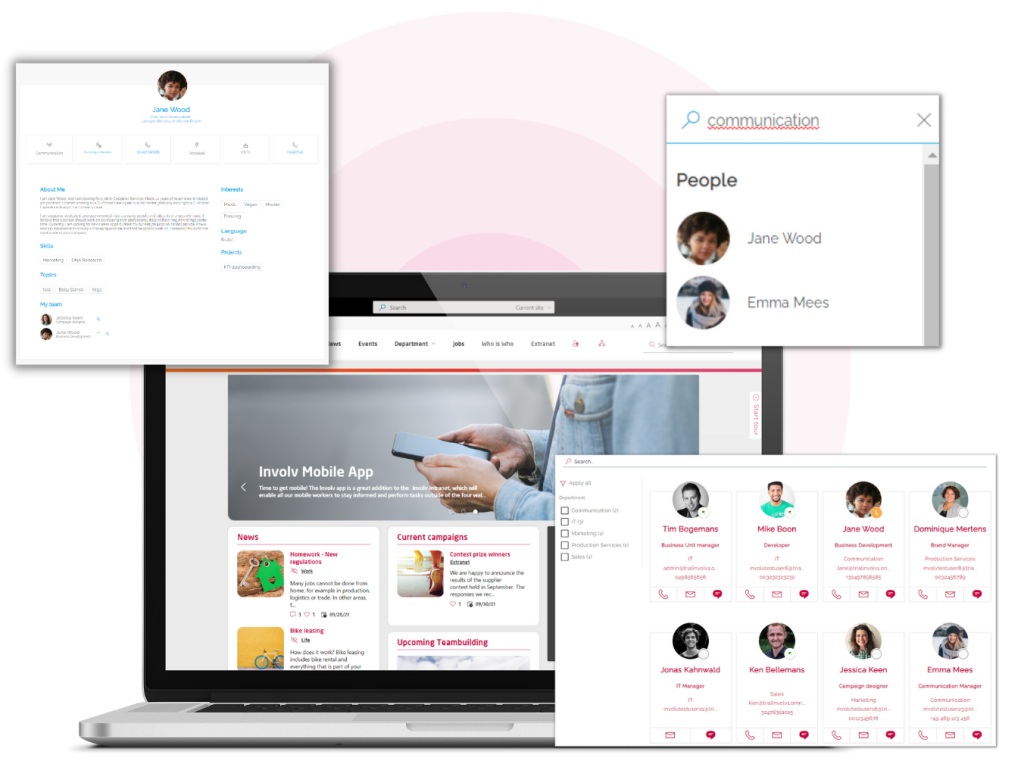Teamwork makes the dream work yet getting colleagues to collaborate can be an uphill struggle. According to a McKinsey Global Institute study, the average employees spends approximately 20 per cent of their time at work tracking down colleagues who can assist with a task.
Yet, in an ideal world, colleagues should be able to find each other and collaborate at the touch of a button. Colleagues who exchange ideas, knowledge and resources – are said to be more efficient and effective at problem solving, benefiting from increased innovation and are more creative.
Companies with Highly Engaged Workforce Are 21% More Profitable
– Gallup –
Organisations that prioritise collaboration are more successful at creating a culture of transparency, which is essential for maintaining a healthy work environment.
But departments and teams often work in silos. Plus, each job role comes with its own set of needs, goals and processes, which often makes it hard for employees to share learnings in practice.
It’s up to organisations to be proactive in breaking down communication barriers between departments and colleagues. There must be organisation-wide initiatives that encourage knowledge sharing, transparency and interconnectedness.
How to use your intranet to facilitate better collaboration
This is where internal comms comes in. By using effective comms strategies organisations can lay the groundwork for better collaboration.
Here’s some tips from our customers on how they’re using their intranets to facilitate better collaboration:
Manage documents effectively
One of the cornerstones of an efficient collaboration is a strong document management system. With intranets built in the Microsoft 365 ecosystem, you can access features such as advanced security, co-authoring, and versioning which makes collaboration so much easier. This centralised repository serves as a “single source of truth” across the organisation, eliminating the risk of outdated and duplicated documents.
Promote inclusivity
To make sure that everyone feels heard and included in discussions and decision-making processes you can introduce an idea management tool into your intranet. There, everyone can submit ideas, discuss and vote whilst managers can evaluate and manage the process.
Provide the right tools
By integrating your intranet into Microsoft Teams you’ll give employees the tools they need to collaborate effectively in the platform they’re using everyday, keeping everyone in the flow of work. Intranet tools such as a ‘People Directory’ enables colleagues to search for and find each other by name, department or skills. Once found, they can connect with their colleagues from the directory, reducing the need for context switching.

Encourage cross functional collaboration
Incentivise employees from different departments and teams to work together and share knowledge and expertise. Encourage team members fill out their profiles in your intranet’s People Directory. Ask them to include their title, who their supervisor is, what kinds of projects they work on, along with any special skill they have.
Their profile can also include hobbies and personal interests that way fellow employees can find the help they need and co-workers they share interests with quickly.

Foster a culture of continuous learning
Intranets are a good way to create knowledge centres where employees can find all the information they need to do their job effectively as well as learn from each other.
Make time for play
Encourage employees to get to know each other outside of work and create opportunities for team-building activities. Use the ‘Events’ feature in your intranet for creating time for fun.
Don’t forget to promote your events on your news channel, as well as external social channels, such as Twitter, LinkedIn and Facebook so everyone can get involved.
Find out how Involv can provide the tools to facilitate collaboration
by downloading our free ebook.
We love collaborating with our customers so book a demo awith one of our friendly intranet experts today.

Free Ebook
Overcoming the Challenges of IC:
Lessons from practitioners
Lessons from practitioners


